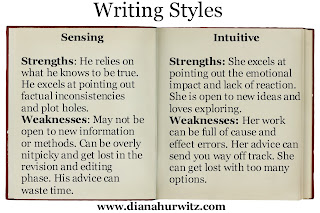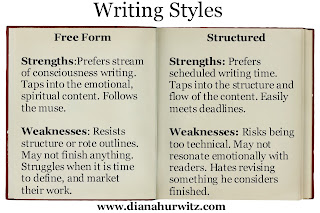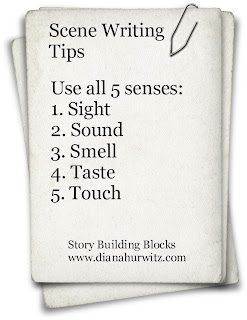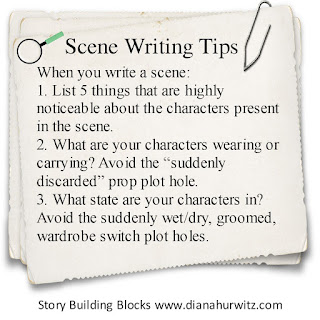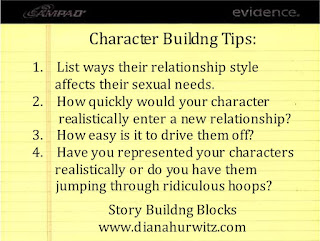For the past few weeks, we have looked at how temperaments affect writing styles. Let's take a tongue-in-cheek look at critique groups.
I’ve had the pleasure, at least the adventure, of participating in several writing groups throughout my career. Not all are what they should be. Of the ones I’ve experienced, I divide them up into five categories:

1. The “I Want To Be A Writer” group. This group of people has often considered writing a book. They meet to talk about their dream of writing like Stephen King. They can be very lovely social gatherings amidst witty, wordy people, but you won’t learn much about craft and probably won’t actually complete anything. The feedback is usually nonexistent because there is really nothing to critique yet.
2. The “I Want To Be Praised” group. This group contains people who are actively trying to write their magnum opus. They come together to egg each other on to write like Stephen King. They are typically light in the craft department and very full of the cheerleader-ish “you-go-girl” moments. You will leave eager to sit down and write, but will have no insight into what you are aiming for. The feedback is usually lacking in solid craft advice.
3. The “I’m A Writer and You’re Not” group. This group contains someone or “ones” who is/are an officially published author(s) who want/s to teach others what they have learned about writing from Stephen King. These can be very uplifting or very damaging depending on the egos at stake. You might walk away with some sound advice or with your manuscript in shreds. It depends on the level of nature versus nurture. The feedback is usually lopsided.
4. The “We All Write and Don’t Need Advice” group. This is where everyone in the group is convinced that he or she is the best thing since Stephen King and does not need your feedback but enjoys “sharing”. This can be a fun group. Doesn’t do much to grow your craft, but it can be hilarious. The feedback can be useful but is typically completely ignored.
5. Finally we come to my personal favorite, and one I subscribe to, “The Master Class Group.” Everyone is there to learn and grow their fiction into the best thing since Stephen King. All of the members can write and critique like professional editors. You leave feeling good about your work and with your manuscript polished and spit-shined like a pair of expensive leather shoes. The feedback is equal and honest without being catty or cruel. Egos are checked at the door and everyone makes sure to offer their advice in a palatable way.
I am lucky to have a group that not only challenges my plot, my characters, and my prose, they also help me fix it!
Not everyone needs or wants the same kind of group. My needs changed with my experience. My advice is to avoid the ones that aren’t serving your needs and to seek out ones that do. And if you are very, very lucky, you find a Master Class.
If you are interested in serious conversations and information on craft, come and hang out with me at Story Building Blocks on Facebook.
Next week, we will take a serious look at how to find your "writing tribe."
Most writers are introverts. That’s just the nature of the beast. Writers spend a lot of time alone and palely loitering over their pads of paper or keyboards.
Introversion is not shyness or social anxiety. Those are fear-based psychological conditions.
I suspect there are more introverted editors, because they are usually confined in a cubicle or freelancing at home. Editing is tedious, lonely work.
It’s easy to tell whos's who at writing conferences. Introverted Jane tends to hang with the people she knows. She scans the crowd looking for familiar faces, or brings her buddies with her. She meets internal resistance when asked to pitch or take the microphone. That doesn’t mean she isn’t interesting or a witty conversationalist.
Once the ice has been chipped, she is eager to talk about what she loves most: writing and reading. She isn’t there to compete. She is there to absorb. She is interested in what other people are writing. She enjoys the individual exercises and lectures but struggles to share in public.
She attends the workshops to hone her craft. She enjoys meeting other introverted writers. It’s the self-promotion and exposing herself to public scrutiny that gives her ulcers. Jane may shun the bar after dinner, unless her friends go with her. Even then, she is likely to seek a table in a back corner. Jane leaves the conference drained and in need of a vacation. If she received negative feedback or criticism, she will ruminate in private or sound off to her trusted circle.
Extroverted writers are in the minority, mainly because they are not natively drawn to long periods of pondering and working in solitude. They tend to be sports or comedy writers, but can show up in any genre.
Dick writes for the recognition or impact. He wants to be the next J. K. Rowling. There are extroverted agents and marketing professionals present too.
Even if the agents, presenters, and editors are introverted, they are forced to schmooze and perform in an extroverted way. Extroverts thrive on it and are easy to spot. The introverted ones can be painfully awkward to watch.
Dick loves the limelight. He flits from table to table, introducing himself to perfect strangers. He hogs the microphone and loves publicly reading his work. He likes watching the other conference attendees. He likes talking about them as well as to them. He is more interested in who you know than what kind of writing you do. He is there to network and promote himself.
Dick finds it hard to focus on the individual exercises. He is easily bored and can be highly competitive. He likes the voting, the rah-rah, and the woo-woo. He likes winning. Dick is concerned about his image. He wants to fit in. He eagerly pitches his ideas to other people. He may never write them.
He is found networking at the bar after dinner long after dinner. Dick leaves the conference humming with energy. If he received negative feedback or criticism, he leaves fuming and vents to everyone about it.
The Dicks at the conference struggle with all the Janes. Extroverts tend to think introverts are boring loners. He couldn’t be more wrong, but that is his general impression. He thinks they are an unfriendly bunch, especially if they don’t eagerly embrace his overtures. He flits until he finds the extrovert’s table.
The Janes at the conference are annoyed by the Dicks. They think the extrovert tables are too loud and rude. They may very well discourage Dick from landing at their table. They will cross the room to avoid his.
Every writer must shore up his weak side. Jane is forced by the very nature of a conference to step outside her comfort zone. She is put on public display and forced to interact with people outside her inner circle. She must sell herself as well as her work. It feels slightly dangerous, but she is in good company.
Dick finds the conference slightly confining. He may not find an audience for his bubbling repartee. He may feel silenced or marginalized for the first time in his career. It isn’t a comfortable sensation. He may be rebuffed, left to bounce around the room like a loosed helium balloon.
Each needs to take pity on the other. They should spend a little time getting to know one another. Opposites can help each other grow. Dick can help Jane learn to network and put her best foot forward. Jane can help Dick learn the pesky details of craft. Both have something worthwhile to offer and to say. Getting Dick to sit down and Jane to speak up is the challenge.
Next week, we will continue to explore writer temperaments.
For more tips on how to craft believable characters, pick up a copy of Story Building Blocks II: Crafting Believable Conflict available in paperback and E-book, and Story Building Blocks: Build A Cast Workbook, also available in paperback and E-book.
In addition to a writer's preferred method of approaching the task of writing, there is a spectrum they fall on when it comes to the types of feedback they prefer.
Dick belongs to the Sensing tribe. He wants the facts and only the facts. He isn’t interested in Jane’s theories or flights of fancy. He keeps it real. He bases his opinions on what he thinks he knows to be true and dismisses anything that counters it. Critiquing Dick's work is challenging because he has already made up his mind about it. He listens (or pretends to listen) then says, “Yes, but.” At the extreme end, Dick can be so fixed in his position, he isn’t willing to change things that aren’t working.
Dick is good at pointing out factual inconsistencies in your plot. His critique is practical. He may get lost in correcting grammar and lose sight of the heart of the piece. He isn’t open to experimentation and thinks writers should stick to what has already been done, whether it is poetry or novels. Sometimes his advice is relevant. Sometimes his advice wastes your time.
Jane belongs to the Intuitive tribe. She doesn’t care how you come up with the idea. She is only interested in whether the idea is intriguing. She loves stepping outside the box. She loves experimental work. Her critiques focus on the possibilities. She makes suggestions that ask you to expand or deepen your idea. Sometimes they work. Sometimes they don’t.
Jane isn't attached to her own opinion, so she is willing to change anything. She struggles when she receives conflicting advice. Asking her to revise her work can send her into a terminal loop of self-doubt or cause her to stall. At the extreme end, she can get so lost in exploring possibilities she never finishes.
There are far more Dicks than Janes in the writing world. There is a 70/30 split in the general population. They face off in workshops, classrooms, and critique groups. Agents or editors paired with their opposites guarantees conflict, misunderstandings, and hurt feelings.
Dick thinks Jane is undisciplined, unorganized, and erratic. He dismisses her advice as unrealistic and impractical. He resents her creative suggestions for how he could fix his plot. Sometimes Jane has a point. He should open his mind a little and consider the merit of the advice before dismissing it. Jane can offer a global perspective when Dick gets too lost in the details. She can help him avoid major plausibility plot holes. She can explain the emotional context.
Jane thinks Dick is plodding, boring, and too rigid. She dismisses his advice as short-sighted and simplistic. She should listen occasionally because Dick can help her fix speed bumps and cause and effect plot holes. His nitpicking can force her to make her work tighter when she has strayed too far from the point or added too much filler.
These opposites can help each other shore up their weak side. They may wish to strangle each other at times, but by working together they encourage each other be the best they can be.
Next week, we will continue to explore writer temperaments.
For more tips on how to craft believable characters, pick up a copy of Story Building Blocks II: Crafting Believable Conflict available in paperback and E-book, and Story Building Blocks: Build A Cast Workbook, also available in paperback and E-book.
Every writer is as individual as a snowflake. Having said that, temperament plays a big part in the method to their madness. We will examine how writers can represent the extreme examples of their temperament. A writer's temperament can be a strength or a weakness. The more evenly balanced they are on the spectrum, the easier it is for them to be successful.
Both types can learn a lot from each other. So when choosing your writing tribe or attending classes or conferences, don't automatically dismiss someone completely different from you.
Jane is free form. Free form writers are affiliated with the Feeling tribe. She writes with an ear to the emotional content of the piece. Whether it is a poem or a novel, Jane goes for pleasing words and meandering flow. She sits down and lets whatever is in her heart pour onto the page. She doesn’t need to know where she is headed. In fact, she’d rather not know. She wants to explore and release the pent up longing in her soul. At worst, she can meander a really long time and go completely off track. At best, her approach results in something uniquely beautiful. She feels bludgeoned if her work is rejected because it is a piece of her heart.
Jane balks when asked to outline or learn structure, be it poetry or novel writing. She prefers free verse to sonnets. That doesn’t mean she can’t be taught how to construct a sonnet, or any of the other delicious sounding names for poem structure. It means her native preference is stream of consciousness. Oftentimes, when it comes to taming that stream or being asked to define it, she gets blocked or quits. She resists the idea of genre and category, though she wishes for the reader to be pleased by her words.
Jane grows as a writer by learning about story architecture. She may never sit down and come up with an outline. However, when she understands the crucial underpinnings of story, she is better able to channel it with her free-flowing approach. She can then bend and twist the structure in creative ways. Free form writers who refuse to embrace the concept of structure often struggle with the publishing game when it comes to story outlines, synopses, and marketing. At the extreme end, Jane may sit at her desk and scribble endlessly but no one ever sees her work. She may enjoy the process more than the outcome.
Dick is structured. Structured writers tend to belong to the Logical family. He likes knowing the plan before he begins. He is less anxious when he knows where the road ends and thinks through all the twists and turns along the way. He likes to consider all the contingencies. Dick can get so lost in the set up, he grows bored and never finishes the book.
Dick enthusiastically embraces structure. He likes having a road map to success. His work may be technically brilliant, but not entirely satisfying. It may lack depth. He is interested in writing well, not necessarily the emotional response of the reader. He struggles with impromptu writing prompts and thinks free verse is a bit suspect.
Dick balks when asked to reconsider a piece. It’s already done. He hit all the marks. What the heck is the agent’s or editor’s problem? They’re just too stupid to get it. Dick is good at handing in a logline, synopsis, and chapter outline. He falls apart when asked to change things. The idea of going back to the drawing board to start over gives him a migraine. He is irritated by the slow pace of the publishing process. He frets and waits anxiously by his in-box for news, especially when the process hit snags and delays.
There are slightly more Janes than Dicks in the writing world. They often bump heads in critique groups, workshops, and classrooms. Jane thinks Dick is too clinical, formal, and wastes too much time thinking and planning before writing. She is put off by his tactical approach. If Dick is her agent, she is frustrated by his demands to firm up her story structure and come up with a logline. Her feelings are hurt when she is asked to cut her darling bugaboos.
Dick thinks Jane is too wishy-washy, undisciplined, and stubbornly shortsighted when it comes to what the industry demands. He appreciates that her heart and soul went into the project, but that doesn’t move units. If Dick is her agent, he may find her work too artsy-fartsy for his taste. When he reads her work and gets to the end, he may state, “But what is the point? I don’t get it. There are lots of pages, but it doesn’t go anywhere.”
Both must push past his or her native inclination to grow and thrive in the business. If they understand their different approaches and are open to the critique, they can balance and aid each other,. Dick can help Jane see where her structure is weak. Jane can help Dick see where his work is soulless.
Next week, we will continue to explore the writer's temperaments.
For more tips on how to craft believable characters, pick up a copy of Story Building Blocks II: Crafting Believable Conflict available in paperback and E-book, and Story Building Blocks: Build A Cast Workbook, also available in paperback and E-book.
Tweet: In your story, it is highly suggested that your main character undergo some form of change by the end. #storybuildingblocks #writingtips
The change can be life-altering or subtle. It can be a change for the better or worse.
It is open for debate if antagonists or secondary characters undergo change of their own.
If one person shifts, it creates ripples in the people around them.
Dick is going along, minding his own business, when - Wham - life throws him a curve ball (i.e. the inciting incident) and his life will never be the same.
Along the way, as he battles obstacles to achieve the overall story goal, he undergoes some form of change: from arrogant to humble, naive to wise, weak to strong, cowardly to brave, misunderstood to understood, adolescent to adult.
These changes result in an up ending if they are positive.
If Dick changes for the worse, you have a down ending.
What makes Dick willing to change?
Depends on the story stakes, the types of obstacles he will face, and the genre you are writing in. The change may be subtle in a Literary tale and overt in a Fantasy tale.
Some endings are a little bit of both.
Dick can be compelled by an authority figure or social group to change, but he himself was not really motivated to change. For instance, he may be court ordered to do community service that opens his eyes to the plight of the underprivileged. He might be ordered by a commanding officer or boss to do something that transgresses his value system and he fights against the order, but eventually gives in because he isn’t willing to endure the price of the alternative. This results in an up-down ending.
Dick might change to escape criticism or banishment from people he cares about, a group he belongs to, or a corporation he has built. At his core, he may never agree to what is being asked of him, but he does it because he must to maintain the status quo or obtain the story goal, which also delivers an up-down ending. If he is being forced to do something healthy, this is an up ending. If he accepts things that are unhealthy, it is a down ending.
Jane may enter the story knowing that she needs to make a change: she needs to leave her unsatisfying job, leave her empty marriage, or stop selling narcotics because she has seen the needle and the damage done. The overall story problem makes the situation worse so that Jane has no choice but to change. This results in an up ending. If Jane knows that she has to make a change that is detrimental to her psyche, it results in a down ending.
Sally may change because she can no longer tolerate the situation she is in, the feelings she is carrying around, or the pain of the status quo. She must change because she simply cannot bear the alternative any more. She was near the breaking point and the inciting incident makes the choice unavoidable. This usually results in an up ending, unless the change she was contemplating was a bad one.
Just as the overall story arc has its ups and downs, so do scenes. A scene can have an up or down ending.
These undulations make the story ride enjoyable. They keep the reader wanting to know how it will all end. Characters that are static throughout a story are boring and hard to root for.
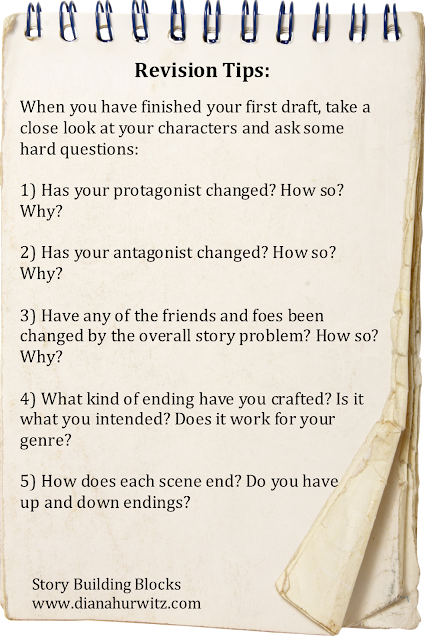 |
| SBB Revision Tips |
For more tips on how to craft believable characters, pick up a copy of Story Building Blocks II: Crafting Believable Conflict available in paperback and E-book, and Story Building Blocks: Build A Cast Workbook, also available in paperback and E-book.





